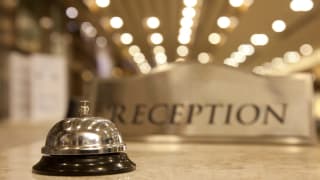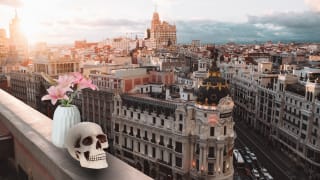Putting Baltimore on the map as one of America's most inclusive destinations
It's critical that a place brand strategy is representative of your community - and that your community is engaged with your approach. Al Hutchinson, President & CEO at Visit Baltimore, joined us to share the story behind Visit Baltimore's brand re-design, and how they put community voices in the spotlight with their messaging.
Thank you for joining us, Al. To begin, I was wondering what your top learning from the past year was?
This past year, I was reminded how important it is to expect the unexpected. At the end of 2019, we had no idea what the world would look like within a matter of months. With that being said, this has reiterated that organizations need to build an agile brand that allows you to pivot when necessary. In the past year, we’ve shifted in all different directions. From supporting local businesses when travel was shuttered to amplifying Black voices during protests for racial justice over the summer, our new and prismatic brand allowed us to lean into these different situations and support our city when it mattered most.
How is your current strategy helping you to dissociate the city from outdated stereotypes?
Despite our city’s cultural renaissance and recent accolades from travel media, Baltimore is often associated with crime. The goal of our work is not to sugar coat any of our city’s challenges that, quite frankly, are not unique to Baltimore. In fact, we believe that no other city is better suited to lead discussions about race, inequality and urban renewal. Visit Baltimore’s new brand allows us to amplify traditionally underrepresented members of Baltimore’s creative class and put Baltimore on the map as one of the most inclusive destinations in America.
What can places do to create a safe, inclusive experience for all people?
When it comes to travel in the United States, the reality is that there are still destinations where many individuals feel unwelcome or even unsafe while visiting. One step that we’ve taken that I highly recommend to other destinations is holding Diversity, Equity and Inclusion trainings for members of the hospitality community. Members of the hospitality and tourism community—from bellmen to restaurant servers, front desk staff and beyond—are ambassadors for the city. These employees need to understand how to make all people feel celebrated and seen throughout the city.
You partnered with local poets to help shape the new narrative for Baltimore. What was the motivator for this? How has it impacted your strategy?
First, I need to thank our partners at the Bellweather Agency for leading us in this direction. Part of the reason why we chose to partner with Bellweather was because of the agency’s focus on rigorous community input and our shared belief that the best brands—especially brands that represent cities or places—are true reflections of the communities they serve.
Once we collected stakeholder and community feedback, we brought East Baltimore poet, writer and spoken word artist Kondwani Fidel on board as chief copywriter for our rebrand. Kondwani is known for his honest depiction of the realities faced by Baltimoreans and people in inner cities across the United States. We believe in Kondwani and his approach to writing, and we felt consumers would feel a similar bond. This ended up being one of the best decisions we could have made; the community has truly embraced the new brand and wrapped their arms around the civic pride campaign we launched last summer.
What would be your top tip for places looking to ensure that their storytelling reflects the diversity of their community?
My top tip is to involve your community in the storytelling process, especially when you take on a big task like rebranding. For our rebrand, we intentionally held workshops and conversations with community members, local leaders and neighbourhood groups throughout the process to ensure all voices were heard. Our creative strategy was guided by robust community input combined with data-informed insights, which meant that the final product feels like a brand created for the people, by the people.
Chatting to the Mayor of Bristol in the UK about city strategies for equitable development and inclusion last year, he suggested that it’s important for place storytelling to acknowledge the challenges that a place faces or risk further excluding disadvantaged and minority groups. Do you agree? And how can places ensure that they are telling their story authentically?
I do agree with this sentiment and would add that residents of your city need to feel seen and heard throughout the entire destination in order to foster a truly welcoming environment. Residents are the best advocates for a destination, so if they do not feel represented, they won’t be shy about telling their friends and family. That’s why it is so important to directly involve all local communities in your storytelling efforts. As I mentioned earlier, that’s precisely why we brought Kondwani Fidel on board early in our rebranding process. And when it came time to develop our brand’s creative assets, we hired award-winning local photographer Devin Allen to capture members of Baltimore’s creative class including rapper, singer and songwriter Al Rogers, poet and performer Mecca Verdell, artist/musician and photographer Jacob Marley and many more.
What role does design play in creating an inclusive place identity?
Early on in our work with the Bellweather Agency during our community stakeholder workshops, we asked for feedback about what represents Baltimore visually. The participants—everyone from restaurants owners and politicians to artists, university officials and community activists—were asked to respond to a showcase of wildly different bits of visual information. We wanted to know what drew them in, what repelled them, and what they felt represented a truly Baltimorean style. With the feedback we collected, we were able to design brand elements and a brand colour palette that truly represent the city.
The new Visit Baltimore logo picks up on our new brand elements by appearing almost spoken aloud: the crescendo of rising letterforms references a megaphone, or a voice projecting boldly into a space. The forms are also a nod to the city’s rowhome architecture and street corners meeting together. Baltimore’s colour palette is inspired by a blend of history, our built environment and the arts. The primary brand colour, Street Lamp, was directly inspired by Baltimore’s history as the first American city to illuminate its streets with public gas street lamps in 1817.
It’s quite hard to track soft measures like this accurately. How are you tracking the effectiveness of your strategy?
It has been especially challenging for us because we launched the new brand and campaign during the pandemic. With this in mind, we’ve been monitoring sentiment on social media and collecting anecdotal responses when we convene virtually with people across the country. We’ve also been taking note of the many institutions across the city that have eagerly adapted language from the brand toolkit we’ve created.
But one of my favourite indicators of the effectiveness of our rebrand and campaign was an amazing letter that our partners at Bellweather received from a Baltimore resident out of the blue. The brand and campaign imagery really resonated with this individual, so he wrote to Bellweather to share heartfelt compliments and appreciation for this campaign that truly captures the essence of the city he knows and loves.
Lastly, if you could implement a new initiative, with no concerns about cost or resources, what would you do?
I talked about Diversity, Equity and Inclusion trainings earlier, and my dream is that we could offer these trainings free of charge to anyone in the destination who’s interested. Education is incredibly important as we work to eradicate racism in the United States, and we need more people—especially from backgrounds of privilege—to understand concepts like unconscious bias and structural racism. We know that consumers are choosing to spend their free time and money in cities that support the betterment of all people and embrace people from all different backgrounds.
Al Hutchinson will be joining us at City Nation Place Americas 2021 on June 16 & 17 to explore how place leaders could - and should - be responding to national conversations around diversity and inclusion to ensure more equitable recovery and future development. See the full City Nation Place Americas agenda here.
Related reading
Unapologetic pride: a new brand for Visit Baltimore
One City: Taking a longer-term view of economic resilience
Solidarity, public health, and the impact of soft power
How you can give a voice to marginalised communities in your place brand strategy
Putting resilience at the heart of post-pandemic placemaking









